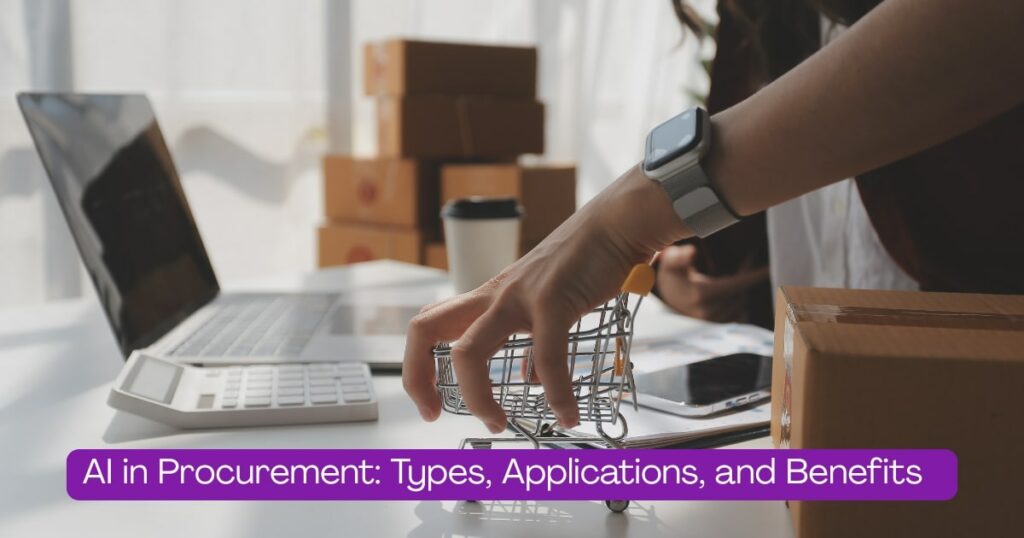
Procurement is a strategic process of identifying, buying, and managing the goods and services for the business operations. It involves a series of steps, from selecting a supplier to negotiating with them, and includes order management and performance evaluation. Businesses aiming to improve their procurement skills often attend procurement courses, which provide the knowledge and tools needed to adapt to modern technology-driven purchasing environments.
Types of Procurement:
- Direct procurement: It involves acquiring any goods or services required for the production process to obtain the final product.
- E.g., raw materials like steel, Bulk fabric, and Packaging components.
- Indirect procurement: Providing materials or services that are not directly involved in the final product but help the operations run smoothly. These support internal functions like HR, IT, marketing, or other facilities.
- E.g., Office supplies, CRM platforms, Electricity, Internet, and Equipment.
- Goods procurement: It focuses on physical items or products that any organisation needs for their internal use or are involved in the production process.
- E.g., Raw materials, Office equipment.
- Services procurement: This can either fall under the direct procurement or indirect procurement. It involves sourcing and managing labour or external expertise with the specialised capabilities to support business needs and operations.
- E.g., Facilities management, Contractors, Freelancers, and Consultants.
AI in Procurement:
Using AI in procurement introduces innovative systems into organisations, which can help to learn, analyse, and automate data to make better decisions.
The technologies like machine learning, natural language processing (NLP), and robotic process automation (RPA) are used.
- Machine Learning can improve demand forecasting, fraud detection, and real-time monitoring with IOT integration.
- Natural Language Processing (NLP) extracts payment terms and renewal clauses from the supplier contracts, scans the emails, and does the risk term detection.
- Robotic Process Automation automates creation, sending, tracking, reporting, and invoice processing tasks.
Key Applications of AI in Procurement
- Real-Time Market Intelligence: AI constantly extracts data from industry news, databases, and geopolitical developments. This can help businesses make timely decisions.
- Spend Analysis: AI tools help gather, clean, and analyse organisation’s data, which helps to understand where the money is spent. It improves the cost-saving opportunities, which can help in strategy sourcing, supplier selection, and contract management.
- Demand Forecasting: Machine learning models can use data analysis to identify the trends and patterns in the past data to predict the future demand in sales. It can also analyse the market conditions and seasonal demand by predicting holidays.
- AI Assistants & Chatbots: AI bots will automate the real-time support by providing instant, accurate support, like fetching the order status without the help of the procurement team.
Benefits of AI-Driven Procurement
- Cost Savings: AI compares prices between the vendors, spots overbilling and duplicate charges which humans can’t detect in real time.
- Time Efficiency: AI Bots automate the routine tasks and operate 24/7 with minimal human intervention.
- Better Compliance: AI enforces policy rules automatically, flags violations early, and ensures regulatory adherence without manual policing.
- Improved Decision-Making: Using the advanced analytics, it is easy to predict the trends, forecasts, and actionable insights, which helps to make data-driven strategies.
Professionals looking to maximise these benefits can enrol in procurement courses covering AI integration strategies, supplier management, and advanced analytics to strengthen operational capabilities.
Challenges to consider in AI-driven procurement are numerous. They include data quality, integration with existing systems, user adoption, and change management. Overcoming these challenges is crucial for successful AI implementation in procurement.
Conclusion
Procurement is no longer just a back-office function; it’s a strategic driver of efficiency, cost savings, and innovation. With the integration of AI technologies such as machine learning, natural language processing, and robotic process automation, organisations can streamline sourcing, enhance supplier relationships, and make faster, data-driven decisions.
However, to fully unlock the benefits of AI-driven procurement, businesses must address challenges like data quality, system integration, and user adoption. Upskilling teams through procurement courses can bridge the knowledge gap, ensuring professionals are well-equipped to leverage the latest tools and strategies. Ultimately, embracing AI and continuous learning will position companies to achieve greater operational excellence and maintain a competitive edge in the evolving procurement landscape.

Leave a Reply